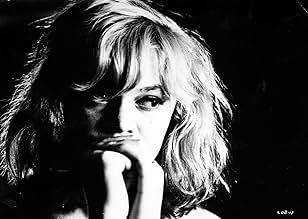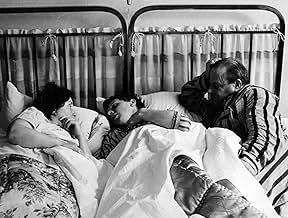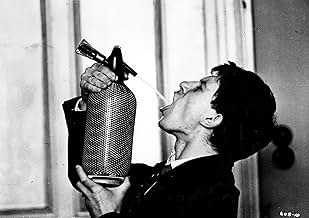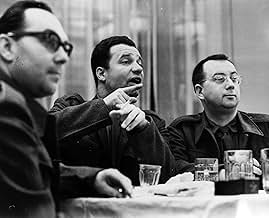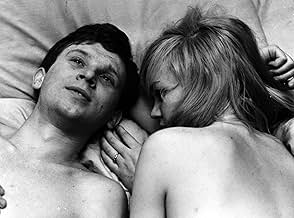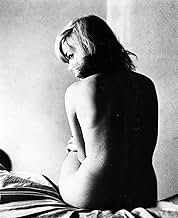IMDb RATING
7.4/10
10K
YOUR RATING
Factory manager gets army reserves to boost female workers' morale. Local beauty spurns them for jazz pianist who seduces her. She leaves for Prague to find him but his parents are displease... Read allFactory manager gets army reserves to boost female workers' morale. Local beauty spurns them for jazz pianist who seduces her. She leaves for Prague to find him but his parents are displeased when she arrives.Factory manager gets army reserves to boost female workers' morale. Local beauty spurns them for jazz pianist who seduces her. She leaves for Prague to find him but his parents are displeased when she arrives.
- Nominated for 1 Oscar
- 2 wins & 4 nominations total
Jana Novaková
- Jana
- (as Jana Nováková)
Jindrich Heidelberg
- Reditel
- (uncredited)
Dana Valtová
- Bohunka
- (uncredited)
Featured reviews
It is true but sad that no one in the world would have known about a small Czech town named Zruc if Czech director Milos Forman had not made this film.It is a good thing that he has made it as its fresh appeal would ensure that it is remembered as a supreme example of a famous cinema movement of the sixties called Czech new wave."Lásky jedné Plavovlásky" is a touching film about sad realities, disappointments in love faced by innocent people when they pursue an idle romantic relationship.It is based on a real event which took place in Milos Forman's life when at Prague he saw a beautiful albeit a lost girl roaming in the middle of the night.We see the lives of young people especially young girls who feel bored as there is hardly any male companionship available to them.As this film was made in socialist times we also get to see the attitude of parents belonging to a socialist system.Milos Forman makes his film memorable when he deals with risks which young people take when they fall in live.He conveys that it is not so easy to continue a relationship which has remained frivolous from its inception.Loves of a blonde maintains it serious stance as there is a talk of a serious problem of dwindling male female ratio faced by many European nations.One of the most funny moments of this film include a good social experiment when an army unit is asked to move to Zruc in order to woo its lonely girls.
Part of what was known as the Czech New Wave in the 1960s and this particular title a great favourite of Film clubs and societies back in my younger days. Director Milos Foreman, of course, left what is now known as the Czech Republic for the US where he made films as diverse as The People vs Larry Flynt, Amadeus and One Flew Over the Cuckoo's Nest. Before leaving he mad a trio of film in his native country of which this is probably the best although his similar and later film The Firemen's Ball had, perhaps even greater impact internationally being in colour. For A Blonde in Love Foreman uses mostly local people from the village where he shot with, I believe, only one professional actor who it turns out was as influenced by the non actors as there were by him. The young blonde of the title was the sister of the director's wife and gives a wonderful performance. Indeed the whole piece, barely a story, is a joy to watch despite the cringe worthy moments, on the dance floor in particular. A warm and caring film that is beautifully shot and despite an obvious air of austerity throughout still managing to convey a feeling of positivity. Lovely.
A factory manager in rural Czechoslovakia bargains with the army to send men to the area, to boost the morale of his young female workers, deprived of male company since the local boys have been conscripted.
Loves of a Blonde has often been identified as one of the most significant and ambitious productions of the Czech New Wave, a movement in which a group of young filmmakers, many of whom were educated by the national film academy in Prague, including Forman, Ján Kadár, Věra Chytilová and Jiří Menzel, among others, took significant political risks by using cinema to protest the hypocrisy and absurdity of the Communist state.
I'll say it before and I'll say it again, of all the "new wave" movements in Europe, by far my favorite is the one that came out of the Czech cinema. The beauty, the honesty and sometimes the surrealism (though not here) is just spot on, and for me really captures what it means to have film as an art form. That Forman went on to become an international success is no surprise.
Loves of a Blonde has often been identified as one of the most significant and ambitious productions of the Czech New Wave, a movement in which a group of young filmmakers, many of whom were educated by the national film academy in Prague, including Forman, Ján Kadár, Věra Chytilová and Jiří Menzel, among others, took significant political risks by using cinema to protest the hypocrisy and absurdity of the Communist state.
I'll say it before and I'll say it again, of all the "new wave" movements in Europe, by far my favorite is the one that came out of the Czech cinema. The beauty, the honesty and sometimes the surrealism (though not here) is just spot on, and for me really captures what it means to have film as an art form. That Forman went on to become an international success is no surprise.
This is the second of Forman's Czech films I've watched after the other Criterion release, THE FIREMAN'S BALL (1967) - though that was via a late-night Italian TV broadcast some years ago; these two films constitute his most celebrated work from this early phase in his career.
While a pleasant and sharply-observed comedy-drama in itself, which must have seemed fresh at the time (particularly the intimate detail of its teenage romance), I feel that a lot of these unassuming but critically-acclaimed foreign films - often made under strained political conditions - tend to come off as overrated when viewed today (a similar recent example I encountered was CLOSELY WATCHED TRAINS [1966]). That said, the film benefits immensely from the wonderful cinematography by Miroslav Ondricek (Forman's longtime collaborator).
Besides, it also includes a couple of lengthy - and delightful - set-pieces: the party sequence, in which the heroine and her two best friends are picked up by a trio of geeky middle-aged soldiers; the scene at the home of the girl's 'boyfriend' (with whom she had a one-night stand), where she causes a commotion by turning up unannounced on his doorstep with a packed suitcase!
The DVD supplements comprise an amusing but irrelevant deleted scene, and an interesting 17-minute interview with Forman - in which he discusses the film's genesis and how the mix of professional and untrained actors proved providential, sealing its essential charm.
While a pleasant and sharply-observed comedy-drama in itself, which must have seemed fresh at the time (particularly the intimate detail of its teenage romance), I feel that a lot of these unassuming but critically-acclaimed foreign films - often made under strained political conditions - tend to come off as overrated when viewed today (a similar recent example I encountered was CLOSELY WATCHED TRAINS [1966]). That said, the film benefits immensely from the wonderful cinematography by Miroslav Ondricek (Forman's longtime collaborator).
Besides, it also includes a couple of lengthy - and delightful - set-pieces: the party sequence, in which the heroine and her two best friends are picked up by a trio of geeky middle-aged soldiers; the scene at the home of the girl's 'boyfriend' (with whom she had a one-night stand), where she causes a commotion by turning up unannounced on his doorstep with a packed suitcase!
The DVD supplements comprise an amusing but irrelevant deleted scene, and an interesting 17-minute interview with Forman - in which he discusses the film's genesis and how the mix of professional and untrained actors proved providential, sealing its essential charm.
Andula is working-class girl living in a Czech town.She sleeps with a pianist called Milda after a party.When she doesn't hear from him, she travels to his parents place, where he still lives.Lásky jedné plavovlásky (English title Loves of a Blonde) from 1965 was the first big hit of Milos Forman.This Czechoslovakian film was nominated for the Golden Globe and Academy Award for best foreign film.In my country, Finland, it won a Jussi Award.Hana Brejchová is wonderful as Andula.Vladimir Pucholt is terrific as Milda.Milada Jezkova and Josef Sebánek are great as his parents.The dialogue is marvelous.Like when Andula and Milda are lying in bed and he explains to her how she's angular.That the woman is shaped like a guitar but she's one painted by Picasso.And there are some terrific scenes.The restaurant scenes are fantastic.Those men on their table are checking on the women on their table, trying to find a way to approach.And when Andula arrives at Milda's place and the mother can't deal with it.Great work from the Czech master.
Did you know
- TriviaDirector/screenwriter Milos Forman got the idea for the movie when he met a young girl with a suitcase in the streets of Prague. Her story was very similar to the one in the film.
- ConnectionsFeatured in Fejezetek a film történetéböl: A cseh új hullám (1990)
- How long is Loves of a Blonde?Powered by Alexa
Details
- Release date
- Country of origin
- Language
- Also known as
- Loves of a Blonde
- Filming locations
- Zruc nad Sázavou, Czech Republic(formerly Czechoslovakia)
- Production companies
- See more company credits at IMDbPro
- Runtime1 hour 28 minutes
- Color
- Sound mix
- Aspect ratio
- 1.37 : 1
Contribute to this page
Suggest an edit or add missing content


